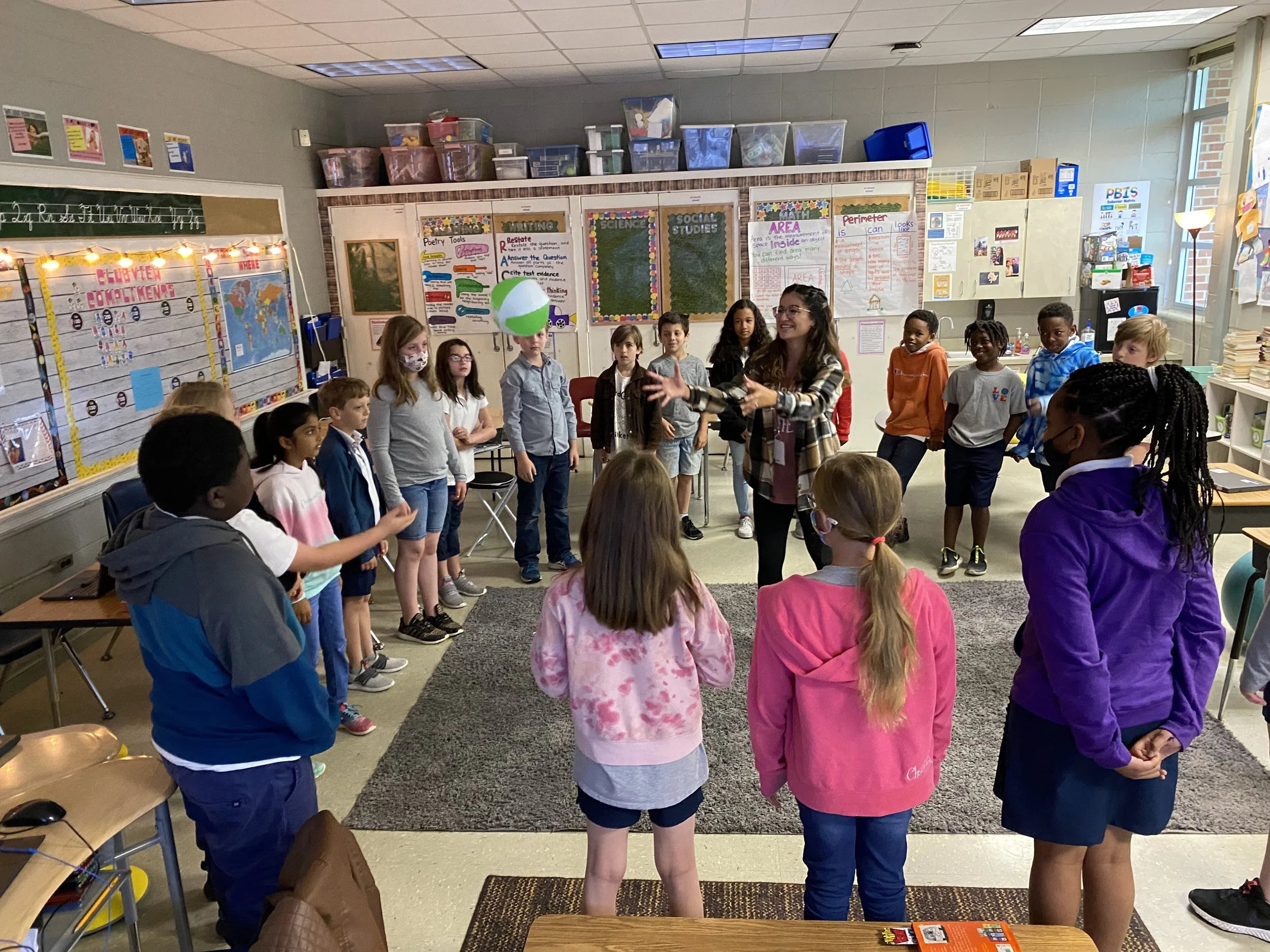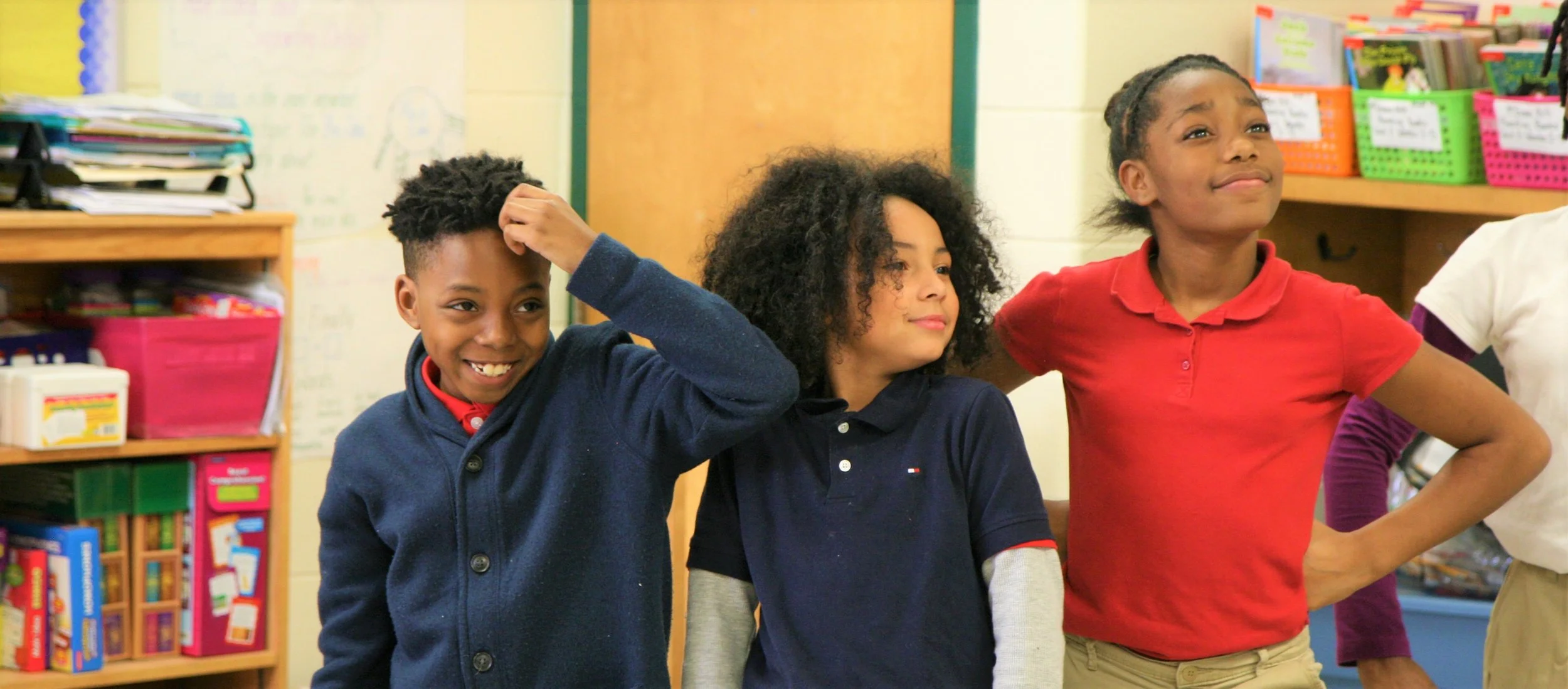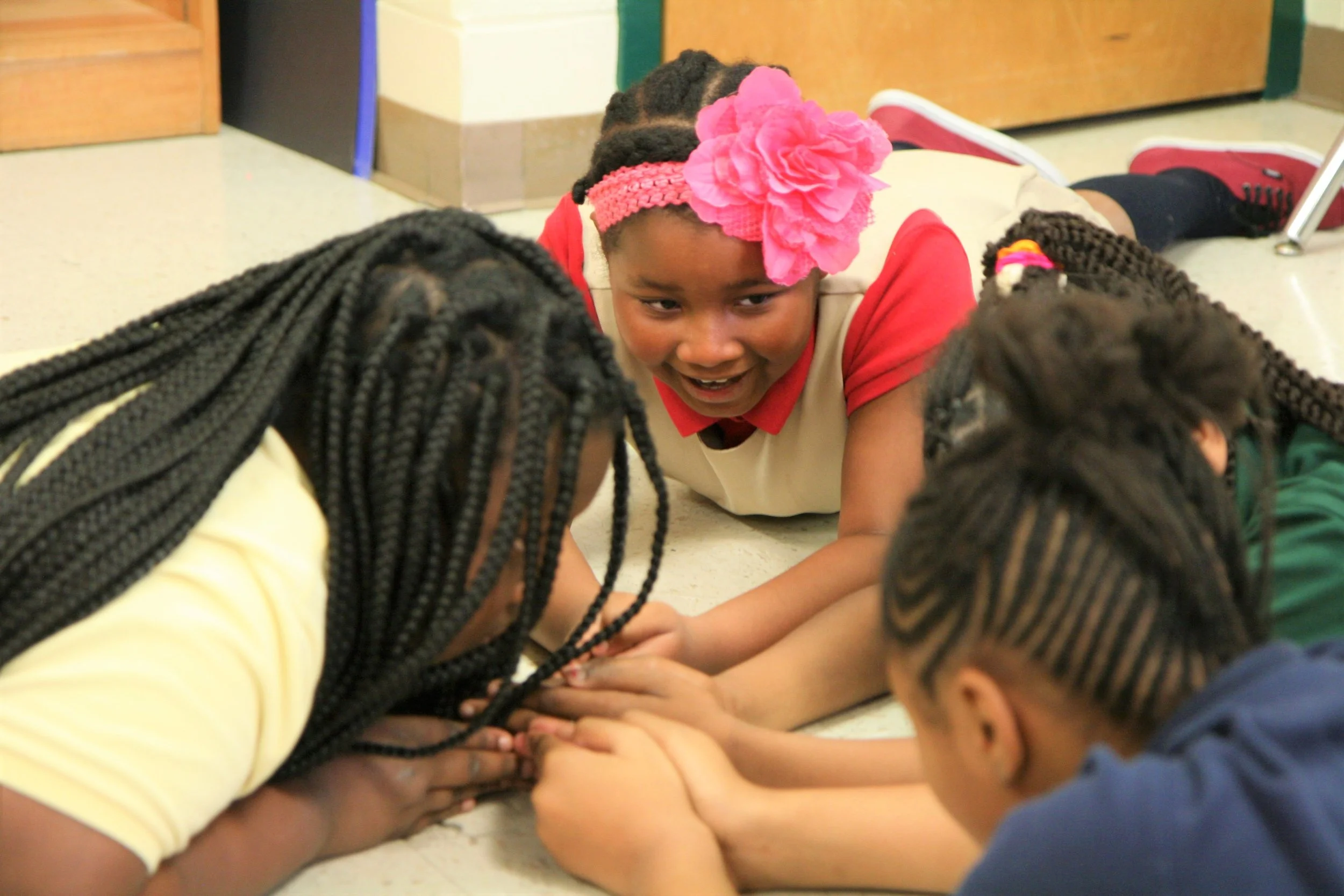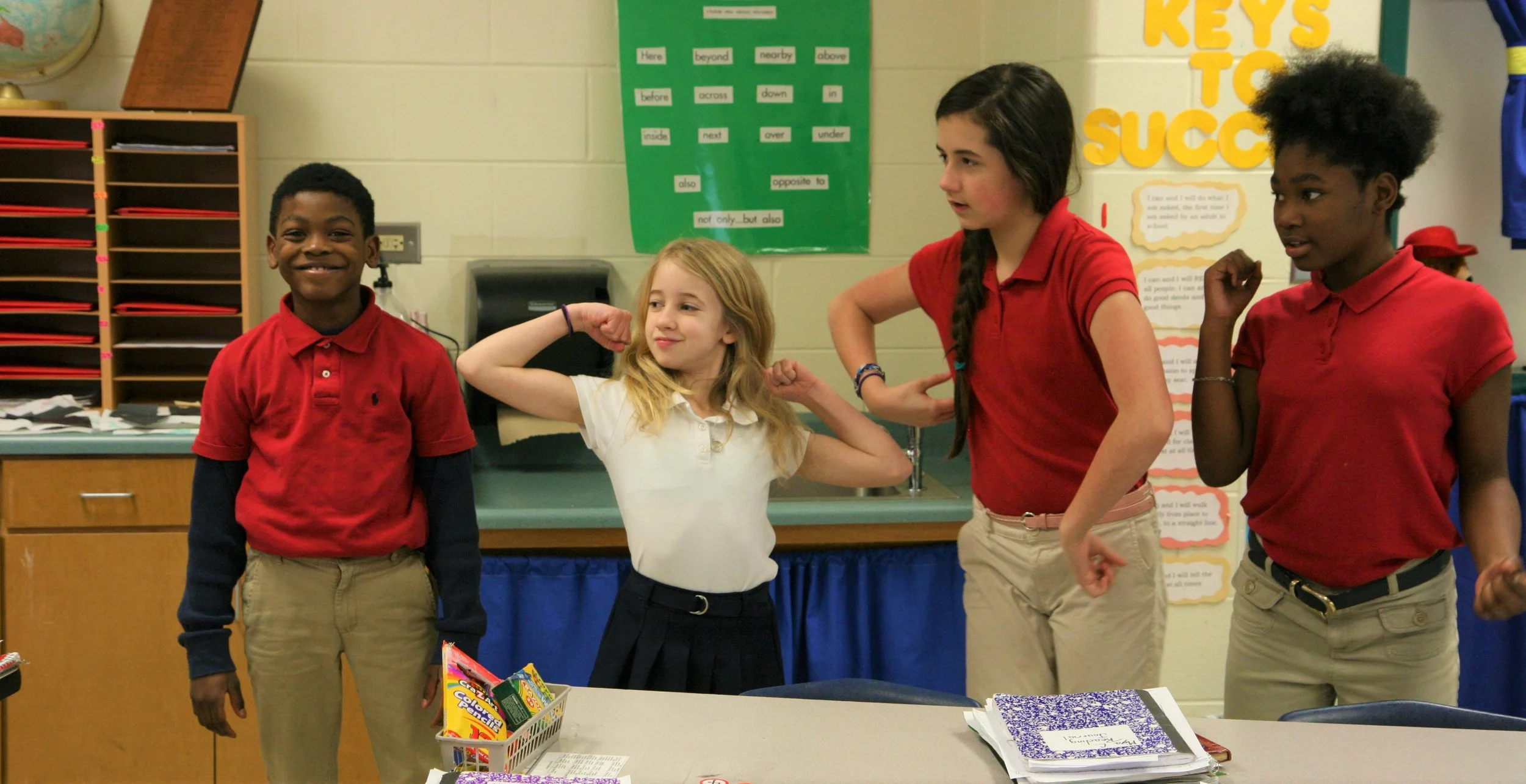An Easy Arts Integration Lesson Plan for your Classroom — This Is Not a Roll of Tape.
This is Not a Roll of Tape. Then what is it?
Imagination. That’s where art in your classroom starts. And the great thing about imagination? Everyone has one.
Maybe as a kid you built a blanket fort in your living room and imagined an adventure filled with exploring caves or hiding from dinosaurs. And now as a teacher you sit at your desk imagining the strawberry margarita and fish tacos you are going to get at the end of the day. Both start with imagination.
For someone who doesn’t know a lot about theatre or drama, it can feel overwhelming to use it in your classroom and even scarier to teach it. But here’s the catch…you and your students are already using your imaginations daily, so why not use it to help create arts integration lesson plans?
Arts integration encourages students to use their imagination and creativity while processing the curriculum you are teaching in the classroom. We are going to show you how using drama in the classroom can be easy and fun for all who are involved.
This is Not a Roll of Tape
One strategy we love to use is This is Not a Roll of Tape. This strategy encourages students to use their imagination and creativity while also taking risks. Here’s how it works:
The teacher will hold up a roll of tape. *You can choose to use a different object like a paper clip, cardboard box, plastic bag, etc.
The dialogue will remain the same throughout the whole strategy. “This is not a roll of tape, this is…”
Now the imagination kicks in.
“This is not a roll of tape, this is a bracelet.” And you would put the roll of tape on your wrist as if it were a bracelet.
“This is not a roll of tape, this is a crown.” The roll of tape would then be placed on your head like a crown worn by a queen or king. You are using the shape, texture, color, etc. of the object to give it a new life form.
We want to encourage students to really lean into their imagination and creativity and take those risks. So, let them know that there is no wrong answer.
Once students understand the strategy, we can add in a few theatre vocabulary words. Some of these words might include:
Character
Facial expressions
Body position
We can question the art by asking:
“How did your body position change when the roll of tape became a bracelet?”
“What kind of character might wear a crown?”
“How would your facial expression change if a crown was placed on your head?”
We are using drama in the classroom to first think creatively and then think critically about the choices we make.
Let’s Make it Arts Integration with Science!
This is Not a Roll of Tape paired with Regions of Georgia. This is a third grade life science standard:
*Please note, the PAIR Program currently serves educators in Georgia, so the standards listed here reflect Georgia Standards of Exellence, but these activities can be adapted to any classroom.
(Science) S3L1. Obtain, evaluate, and communicate information about the similarities and differences between plants, animals, and habitats found within geographic regions (Blue Ridge Mountains, Piedmont, Coastal Plains, Valley and Ridge, and Appalachian Plateau) of Georgia.
Ask questions to differentiate between plants, animals, and habitats found within Georgia’s geographic regions.
Construct an explanation of how external features and adaptations (camouflage, hibernation, migration, mimicry) of animals allow them to survive in their habitat.
Use evidence to construct an explanation of why some organisms can thrive in one habitat and not in another.
(Theatre) TA3.CR.1 Organize, design, and refine theatrical work.
Create characters with specific traits (e.g. physical, vocal, emotional) that respond to imaginary circumstances.
Collaborate with an ensemble to rehearse, refine, and question a theatrical work.
Identify and imagine technical elements that support a theatre experience.
Use theatre vocabulary (e.g. character, setting, dialogue, point of view, plot, conflict, resolution).
We can use This is Not a Roll of Tape to review what we have learned about the Regions of Georgia.
Tell students that the roll of tape has to represent something they could find in one of the five regions of Georgia.
“This is not a roll of tape, this is a clump of snow found at the top of the Blue Ridge Mountains.”
“This is not a roll of tape, this is a flat pebble found in the Coastal Plains.”
“This is not a roll of tape, this is the eye of an owl found in the Appalachian Plateau.”
2. Remember to question the art as well as the science.
Think Like a Researcher/Scientist: If that roll of tape represents an owl’s eye, when might owls have their eyes that big or open?
Think Like an Actor: How does your body position or level show me that the snow is at the top of the Blue Ridge Mountains?
Think Like a Teammate: How did you feel when someone else had the same idea as you? How did you use someone else’s idea to inspire your choice?
The goal of arts integration is to learn more about the curriculum (in this case science) by using the arts and learn more about the arts (in this case theatre) by using the curriculum.
Let’s Make it Arts Integration with ELA!
This is Not a Roll of Tape also works really well as a jumping off point for writing across grade levels.
Here is one of the writing standards in Georgia for first grade:
(English Language Arts) ELAGSE1W3 Write narratives in which they recount two or more appropriately sequenced events, include some details regarding what happened, use temporal words to signal event order, and provide some sense of closure.
Now paired with a theatre standard.
(Theatre) TA1.CR.1 Organize, design, and refine theatrical work.
Use imagination to create, revise, and/or add to ideas.
Demonstrate skills of the mind (e.g. imagination, focus, concentration).
Follow directions and contribute to planning in theatre experiences.
Listen to others with respect and courtesy in an ensemble.
Identify basic theatre vocabulary (setting, character, problem, resolution, plot, beginning, middle, end).
Maybe you change up the strategy this time and instead of a roll of tape, it is a cardboard box. “This is not a cardboard box, this is…”
Students would then come up with different things the cardboard box could be.
“This is not a cardboard box, this is a tent.”
“This is not a cardboard box, this is a tent.”
“This is not a cardboard box, this is a race car.”
This is not a cardboard box, this is a boat.”
From here, the teacher can lead the class in the telling of a narrative. As a class, create a story based on one of the suggestions. Let’s say we chose “This is not a cardboard box, this is a tent.”
Some questions to get our narrative started might be:
When might we use a tent?
Who might use a tent?
Let’s say that one student says that we use a tent to go camping and another student says that a family might use a tent. Start with that. “Once upon a time, there was a family who planned to take a camping trip…” Have your students fill in events or details.
What happens on the camping trip?
Do they get lost? Do they find a bear?
It doesn’t really matter what happens during the story, but it is more about the process of telling a collaborative story. In theatre, we call a group that works together, an ensemble. Working with your students to create this narrative gives a lot of opportunity to use words like:
Ensemble
Beginning, Middle, End
Setting
Conflict/Resolution
Once you have created the narrative with your class, you can always test their comprehension by having them draw a scene that took place in the story.
Arts integration doesn’t have to feel overwhelming or take a lot of extra work. Start with the tools you and your students already have. Something as simple as imagination. Encourage the art and use it to your advantage when teaching your curriculum.
Remember that encouraging things like imagination and creativity will help your students to think more critically and deeply about their learning. And yes, they will have a lot of fun doing it too! Want more tips on how to invite arts integration into your classroom? Follow us on Instagram for tidbits and trainings to bring out the creative teacher in YOU! Call us today at 706-324-1100 to start your partnership!





